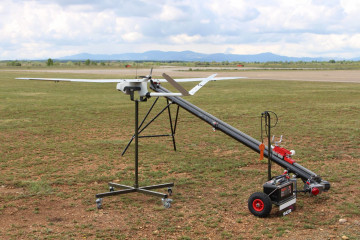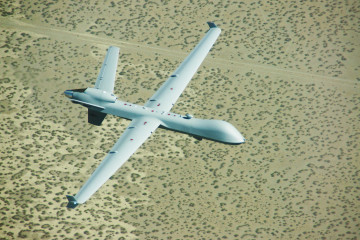Piñeiro MOPS: "Fulmar's deployment in Iraq is expected in November"

Rear Adm. Antonio Piñeiro Sánchez is the adjunct to the Chief of Staff of Spain’s Operations Command (MOPS).
In an interview with Infodefensa.com, the rear admiral analyzed the use of remotely-piloted aircraft systems (RPAS) in the missions in which Spain takes part and said that the plan was to deploy Thales’ Fulmar in Iraq next November. He also took stock of the first months the Scaneagle has been deployed with the international coalition training Iraqi troops.
Piñeiro will act as moderator of a roundtable on Operational Experience on Thursday, May 31, at the UNVEX S&D drone summit. The panel will include representatives from the Spanish Army’s Intelligence Regiment, the Air Force’s Airborne Sappers Squadron and the Navy’s 11th Aircraft Wing.
The Navy has recently deployed the Scaneagle in Iraq. What’s your impression of these first months of deployment?
The use of the Scaneagle is a basic tool when it comes to developing operations and obtaining intelligence. It is being profusely used both to support Spanish special forces and to support international coalition forces, in order to benefit Iraqi operations.
Is there a date for the 11th Wing’s unit’s return to Spain?
The deployed unit will return in November 2018.
Have you already tested the new systems such as Thales’ Fulmar of SCR’s Atlantic?
We expect to deploy the Fulmar in Iraq next November. The system is currently being tested at the Army’s Logistics Support Command (MALOG) before its final delivery to units. The Army is now instructing trained operators for its future use.
At an operational level, how are you preparing for the arrival of a MALE system such as the Reaper?
We expect to integrate these weapons systems in Command and Control as an efficacy multiplicator when it comes to intelligence acquisition and in benefit of the protection of our forces. The Reaper’s arrival will mean a big boost to the armed forces’ JISR (Joint Intelligence Surveillance and Reconnaissance) capabilities. In the short term, its implementation is being managed within the Air Force so that it can be integrated for joint use later in time.
In Iraq, Spain has also deployed its first anti-drone systems. How are they functioning?
Iraq was the first area of operations where it was determined that there was a threat stemming from commercial drones. This prompted the deployment of a counter-RPAS (C-RPAS) system at the Gran Capitán base in Besmayah (near Baghdad), which is functioning correctly by warning of possible threats to the deployment area of all our personnel, both in the living areas and in the training camps where a large part of their activities and tasks take place. In addition, portable systems that provide units that move away from the base with anti-drone capabilities. Until now, there has been no need to use them against any real threat.
Apart from Operation Inherent Resolve in Iraq and Operation Atalanta (the European Union Naval Force’s anti-piracy mission in the Horn of Africa), is the Chief of Defense Staff planning to deploy RPAS in any other missions?
At present, apart from the operations you’ve mentioned, there are RPAS of the Raven I type deployed in the European Union Training Mission-Mali. In the short term, there have been no further requests made to Spain for the deployment of RPAS in other operations; however, it remains an option that could be needed at any time for any operation. At a domestic level, the armed forces have been using these systems in their wildfire prevention efforts in the regions of Galicia - with the Raven being used in Operation Galician Sentinel _ and Castile and León.








